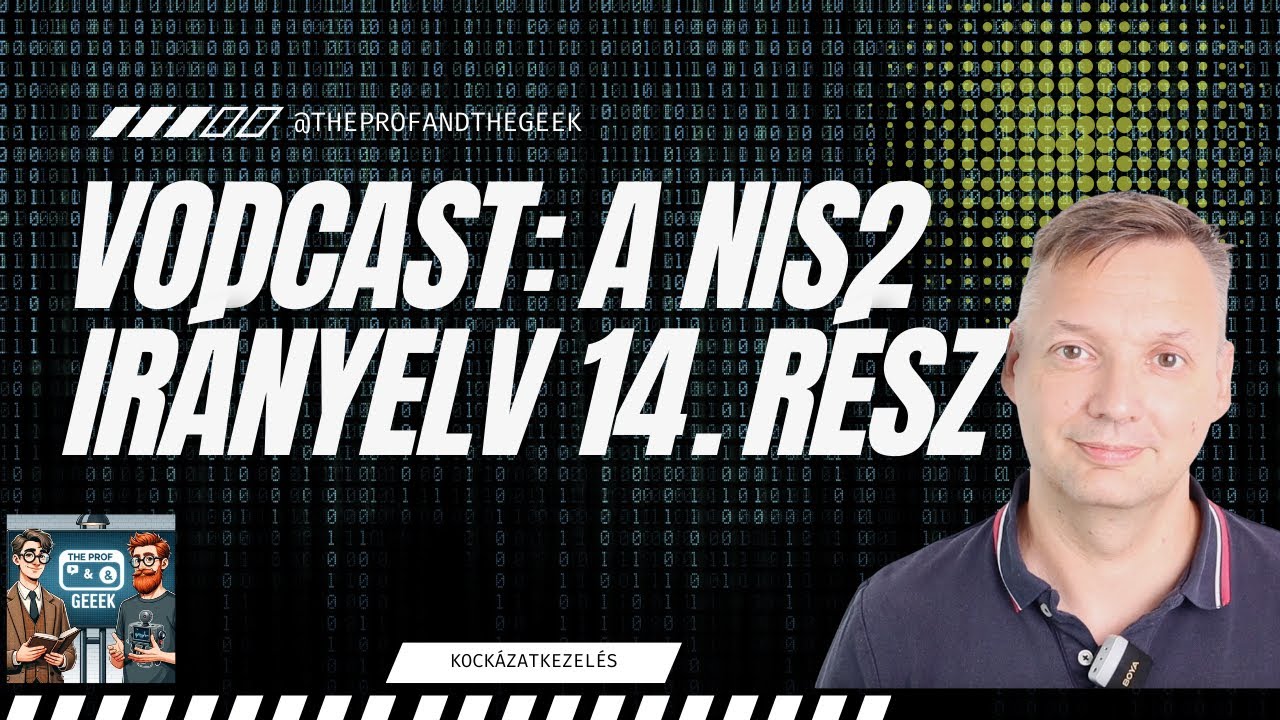CompTIA Security+ SY0-701 Course - 5.3 Explain the Processes Associated with Third-Prty Risk.
Summary
TLDRThis lesson delves into the vital process of vendor assessment in third-party risk management, highlighting the importance of evaluating vendors to ensure they adhere to security standards. It covers penetration testing, audit rights, and supply chain security. The video also outlines various agreements like SLAs, MOAs, MSAs, and NDAs, which define terms and responsibilities in third-party relationships, emphasizing their role in maintaining security and compliance in an interconnected business world.
Takeaways
- 🛡️ Vendor assessment is a crucial part of third-party risk management, ensuring that vendors meet an organization's security standards.
- 🔍 Conducting penetration tests on vendor solutions helps identify vulnerabilities before they impact the organization.
- 📋 The right to audit clause in contracts allows organizations to verify a vendor's internal controls and compliance with regulations.
- 📝 Various types of agreements are used to manage third-party relationships, including service level agreements, memoranda of understanding, and master service agreements.
- 🔑 Service level agreements (SLAs) specify the services provided by a vendor and the standards that must be met, such as uptime guarantees and response times.
- 🤝 Memoranda of agreement (MOAs) and memoranda of understanding (MOUs) outline agreements between parties, which may not be legally binding.
- 📑 Master service agreements (MSAs) are comprehensive contracts that cover the general terms and conditions of the relationship with a vendor.
- 📝 Statements of work (SOWs) detail the specifics of particular projects or tasks that a vendor is to undertake.
- 🔒 Non-disclosure agreements (NDAs) ensure the confidentiality of sensitive information shared between an organization and a vendor.
- 🤝 Business partner agreements define the terms and conditions of a partnership, including data handling, security requirements, and dispute resolution.
- 🔒 Managing third-party risks through thorough assessments and well-defined agreements is essential for maintaining security and compliance in an interconnected business environment.
Q & A
What is the purpose of conducting vendor assessments?
-Vendor assessments are critical for third-party risk management. They evaluate potential or existing vendors to ensure they meet the organization's security standards, which is essential for maintaining the security and integrity of an organization's assets and operations.
What does a penetration test typically involve in the context of vendor assessment?
-A penetration test involves simulating cyber attacks on a vendor's product or system to identify vulnerabilities that could be exploited. This helps ensure that the vendor's solution does not introduce security weaknesses into the organization.
Can you explain the significance of the 'right to audit' clause in contracts with vendors?
-The 'right to audit' clause allows organizations to review a vendor's internal controls and processes to ensure compliance with specific standards or regulations. It is particularly important in industries like finance where regulatory compliance is a must.
What is the role of internal audits and independent assessments in vendor assessment?
-Internal audits and independent assessments provide evidence of a vendor's operational and security practices. They help organizations verify that a vendor is maintaining appropriate standards and controls within their organization.
How does analyzing a vendor's supply chain security contribute to the overall security of an organization?
-Analyzing a vendor's supply chain security helps identify potential risks that could affect the organization indirectly. It ensures that not only the vendor but also their suppliers meet the necessary security standards to prevent vulnerabilities.
What are the different types of agreements used to manage third-party vendor relationships?
-Types of agreements include Service Level Agreements (SLAs), Memoranda of Agreement (MOAs), Memoranda of Understanding (MOUs), Master Service Agreements (MSAs), Statements of Work (SOWs), Non-Disclosure Agreements (NDAs), and Business Partner Agreements. Each serves a specific purpose in defining the terms, expectations, and responsibilities of the parties involved.
What specific information does a Service Level Agreement (SLA) typically cover?
-An SLA specifies the services a vendor will provide and the standards they must meet. It could include details like uptime guarantees, response times for service issues, and performance benchmarks.
What is the difference between a Memorandum of Agreement (MOA) and a Memorandum of Understanding (MOU)?
-While both MOAs and MOUs outline understandings and agreements between parties, an MOA is typically more formal and may be legally binding, whereas an MOU is often used to document a mutual understanding that may not have legal enforceability.
Can you provide an example of how a Master Service Agreement (MSA) is used?
-A Master Service Agreement serves as a comprehensive contract that covers the general terms and conditions of the relationship between an organization and a vendor. It provides a framework for subsequent work orders or statements of work that specify the details of specific projects or tasks.
What is the purpose of a Statement of Work (SOW) in a vendor relationship?
-A Statement of Work (SOW) outlines the specific objectives, deliverables, timeline, and resources for a particular project or task. It is used to define the scope of work within the context of a larger agreement, such as a Master Service Agreement.
Why are Non-Disclosure Agreements (NDAs) important in vendor relationships?
-NDAs are crucial for ensuring the confidentiality of sensitive information. They are used to protect intellectual property, trade secrets, and other proprietary information when discussing potential projects or during the collaboration with a vendor.
What aspects are typically covered in a Business Partner Agreement?
-A Business Partner Agreement defines the terms and conditions of the partnership, including aspects like data handling, security requirements, revenue sharing, dispute resolution, and other operational guidelines that are critical for collaborations involving sensitive data or co-development of products.
Outlines

此内容仅限付费用户访问。 请升级后访问。
立即升级Mindmap

此内容仅限付费用户访问。 请升级后访问。
立即升级Keywords

此内容仅限付费用户访问。 请升级后访问。
立即升级Highlights

此内容仅限付费用户访问。 请升级后访问。
立即升级Transcripts

此内容仅限付费用户访问。 请升级后访问。
立即升级浏览更多相关视频
5.0 / 5 (0 votes)






